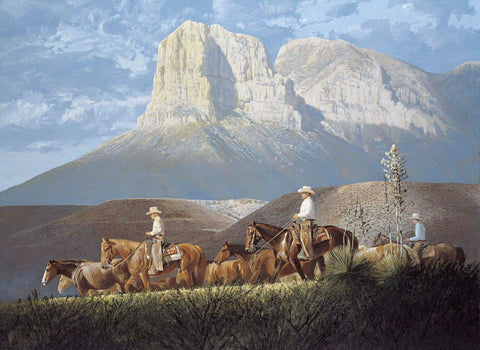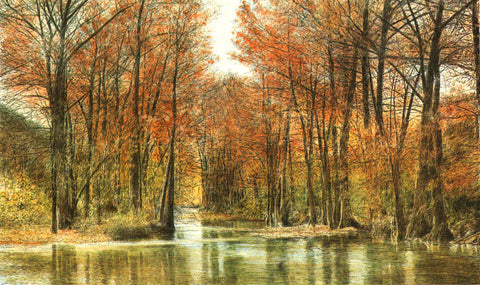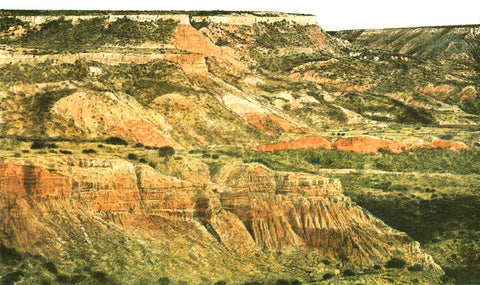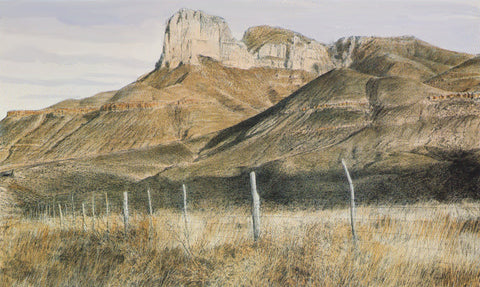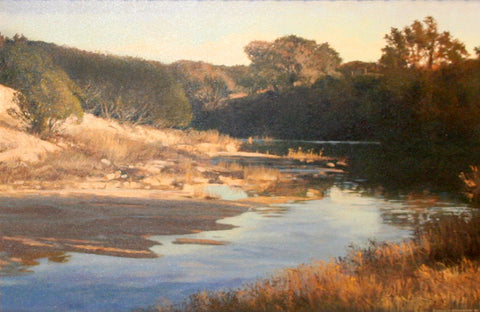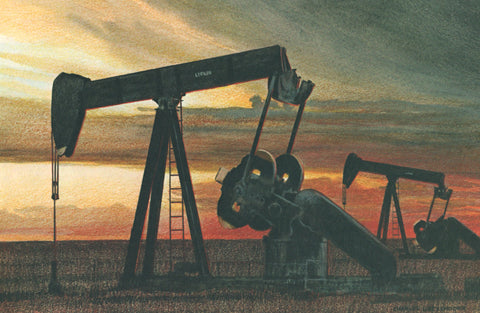
I - 57 Pumping Jacks
Color Reproduction | By Charles Beckendorf
Additional Information
A pumpjack (also called donkey pumper, nodding donkey, pumping unit, horsehead pump, rocking horse, beam pump, dinosaur, sucker rod pump (SRP), grasshopper pump, Big Texan, thirsty bird, orjack pump) is the overground drive for a reciprocating piston pump in an oil well.
It is used to mechanically lift liquid out of the well if there is not enough bottom hole pressure for the liquid to flow all the way to the surface. The arrangement is commonly used for onshore wells producing little oil. Pumpjacks are common in oil-rich areas.
Depending on the size of the pump, it generally produces 5 to 40 litres of liquid at each stroke. Often this is an emulsion of crude oil and water. Pump size is also determined by the depth and weight of the oil to remove, with deeper extraction requiring more power to move the increased weight of the discharge column (discharge head).
This is a part of the Texas Landscape Art Prints Collection.
Color Reproduction
A pumpjack (also called donkey pumper, nodding donkey, pumping unit, horsehead pump, rocking horse, beam pump, dinosaur, sucker rod pump (SRP), grasshopper pump, Big Texan, thirsty bird, orjack pump) is the overground drive for a reciprocating piston pump in an oil well.
It is used to mechanically lift liquid out of the well if there is not enough bottom hole pressure for the liquid to flow all the way to the surface. The arrangement is commonly used for onshore wells producing little oil. Pumpjacks are common in oil-rich areas.
Depending on the size of the pump, it generally produces 5 to 40 litres of liquid at each stroke. Often this is an emulsion of crude oil and water. Pump size is also determined by the depth and weight of the oil to remove, with deeper extraction requiring more power to move the increased weight of the discharge column (discharge head).
This is a part of the Texas Landscape Art Prints Collection.
Beckendorf color reproductions are developed using four color process printing on fine white paper. This advanced technique utilizes separate color plates for each of the primary colors, plus black. High-resolution digital scans and special process inks are utilized to yield beautiful, accurate reproductions.
About the Artist - Charles Beckendorf
Charles grew up in Mathis, Texas, where he had the opportunity to spend hours on large ranches. Generous land owners gave him permission to wander freely over their ranches and he observed creatures in their natural surroundings. He developed a lifelong love of nature, whether it be in the tiniest of flowers or the largest of animals. It was at this time that he became a true naturalist.
We Also Recommend
REVIEWS

